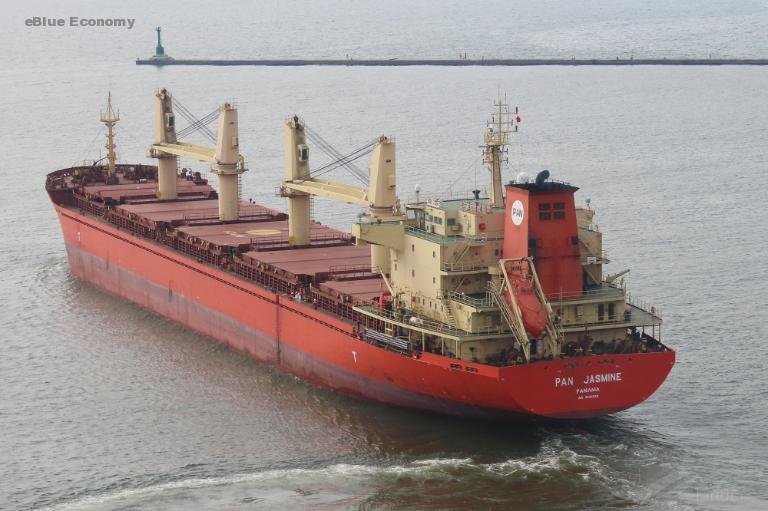U.S. Customs and Border Protection (CBP) agriculture specialists at the Port of New Orleans ordered the removal of a vessel due to invasive insects found in the wood used to secure their previous cargo. The wood (henceforth referred to as “dunnage”) on the ship named Pan Jasmine was found to be infested with five separate pests, two of which required action.
The Pan Jasmine arrived at the anchorage of Davant, downriver from New Orleans at mile marker 54, on July 17. The ship had previously offloaded a shipment of aluminum in Vera Cruz, Mexico, after coming from Paradip, India. The dunnage used to pack the aluminum had not been offloaded in Mexico and was left scattered on the deck of the Pan Jasmine, which is unusual. No reason was provided to CBP as to why the dunnage was refused discharge in Mexico, and this raised a red flag.
An examination of the dunnage revealed burrowing holes and fresh sawdust near the holes, which indicates pests. After two examinations of the dunnage by CBP and USDA personnel, five separate pests were found and identified. Two of the pests discovered pose an agriculture threat to the U.S. They were positively identified by USDA entomologists as Cerambycidae and Myrmicinae.
The Cerambycidae Family of Longhorned Beetles contains many non-native species that pose a serious threat to the environment. The larvae of invasive wood-boring beetles can feed on a wide variety of trees in the U.S., eventually killing them. The Myrmicinae queen ants are a concern because they are capable of producing a colony.
The additional pests found have an established presence in the U.S. including Bostrichidae, a common wood-boring pest.

Cerambycids were discovered in New York City in 1996 and later in Chicago. Native to China and the Korean peninsula, the Cerambycids were accidentally imported into the U.S. via wooden shipping materials. Within two years, infestations resulted in the destruction of nearly 7,000 trees. Recently, the USDA estimated that, if left uncontrolled, Cerambycids and other Chinese wood-boring beetles could cause more than $100 billion in damage to the U.S. economy
According to the USDA Forest Service, the cost of eradication campaigns undertaken between 1996 and 2013 against the cerambycids, was estimated to have exceeded $537 million for all U.S. infestations in Illinois, Massachusetts, New Jersey, New York, and Ohio.
Due to the large volume of dunnage and the presence of highly mobile pests, the vessel was ordered to immediately depart U.S. waters, load the dunnage into the cargo hold and clean the decks prior to returning to the U.S. The Pan Jasmine departed July 21 to Freeport, Bahamas, for dunnage disposal services.
“If the dunnage had been offloaded into the U.S., it would have been put in a Louisiana landfill where the insects could crawl out and invade the local habitat, causing incalculable damage,” said New Orleans Area Port Director Terri Edwards. “Inspecting wood dunnage of otherwise lawful shipments is one of the many, lesser-known ways Office of Field Operations Agriculture Specialists help keep our country safe. I am proud of our agriculture specialists and the USDA personnel for recognizing these dangerous pests.”
















